All life forms on earth require oxygen in order to breathe and stay alive. Oxygen is produced through a process called photosynthesis. In order for plants to perform photosynthesis, three components are needed; sunlight, carbon dioxide (CO₂), and water. But what if you increased CO2 for plants?
Increasing CO₂ for plants can increase growth rate & yield. Research suggests carbon dioxide levels above 1,200 PPM increase growth by 20% & plant size by 30%; but, plants may produce more starch, less protein, & lower nutrient levels. In photosynthesis, plants create glucose from CO₂ & H2O.
Carbon dioxide is produced when humans, animals, and certain plant species breathe in oxygen and exhale carbon dioxide or CO₂ as it is otherwise known.
See the complete article on why leaves are important.
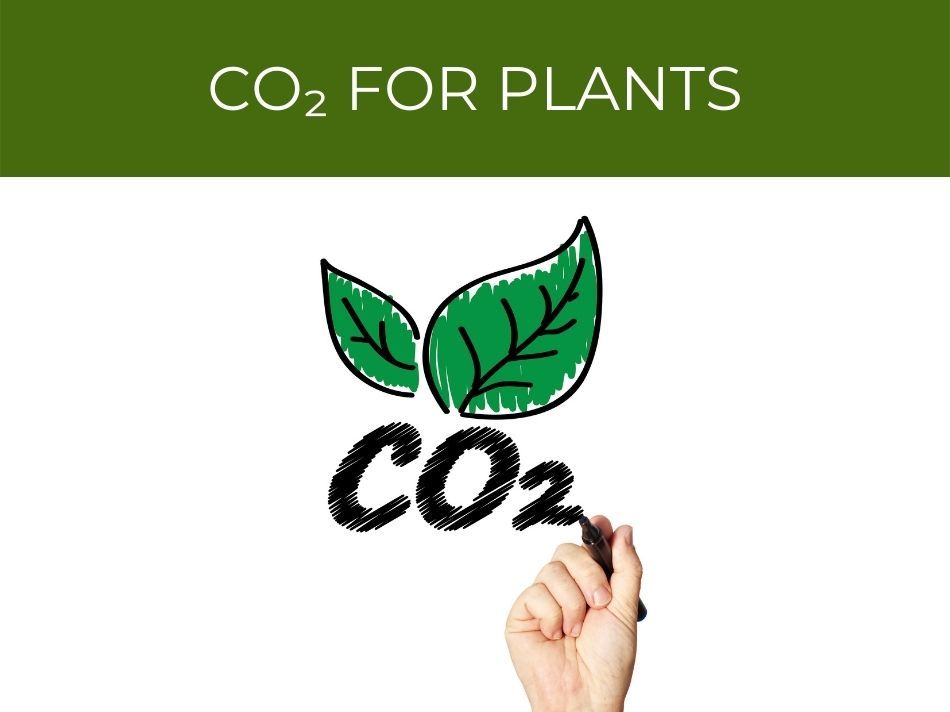
CO₂ for plants
CO₂ is the chemical formula used to identify carbon dioxide, which is a chemical compound in the form of gas.
Carbon dioxide is a very important component required by plants to produce food and to be able to grow.
Without it, photosynthesis cannot take place.
Plants breathe in carbon dioxide and breathe out oxygen.
CO₂ can increase the growth and yield of plants. CO₂ increases the moisture in the air, which helps plants become more resilient & respond better to warmer conditions. Research suggests carbon dioxide levels above 1,200 PPM increase growth by 20% & plant size by 30%.
Keep in mind that CO₂ levels below 250 PPM may harm plants as well.
It is important to regulate the amount of CO₂ plants are exposed to by ventilating the area and monitoring the CO₂ levels.
Check out the full article on what plants need to grow.
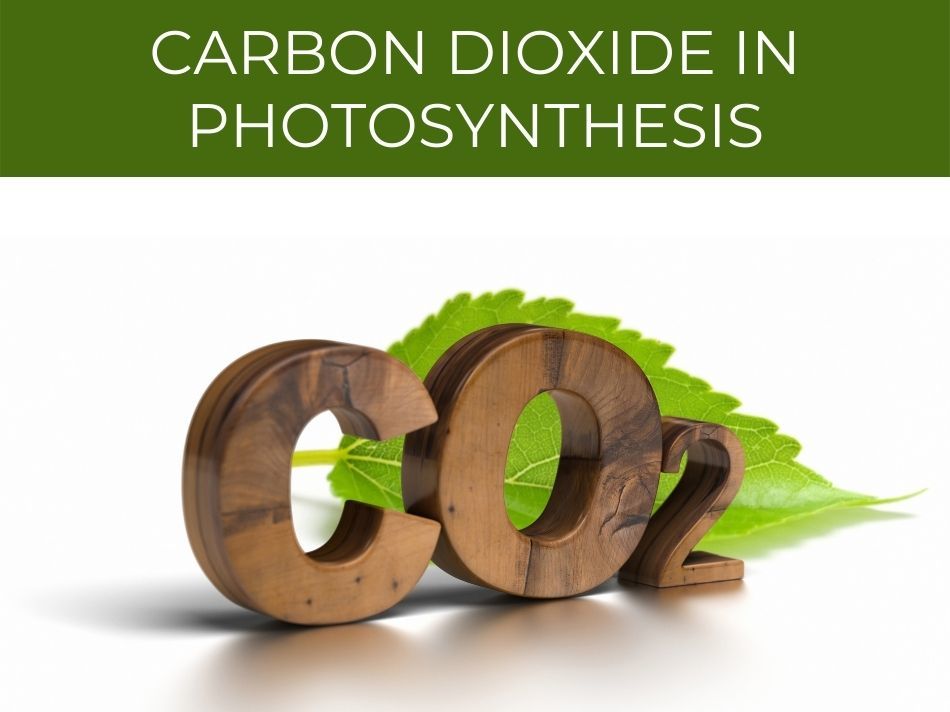
Carbon dioxide in photosynthesis
Plants breathe in carbon dioxide through tiny pores on the surface of the leaf known as stomata.
As soon as the carbon dioxide enters the plant, the process of photosynthesis starts to take place within the plant with the aid of sunlight and water.
Carbon dioxide plays a vital role in both photosynthesis & plant respiration. In photosynthesis, plants take in carbon dioxide, to make glucose as fuel for the plant. This process forms the basis for the carbon cycle, where carbon travels from the atmosphere to Earth & vice versa.
Without the ability to draw carbon dioxide from the air surrounding the plant, the plant will be unable to proceed with the process of photosynthesis.
If the plant is unable to create food and energy the plant will wither and die.
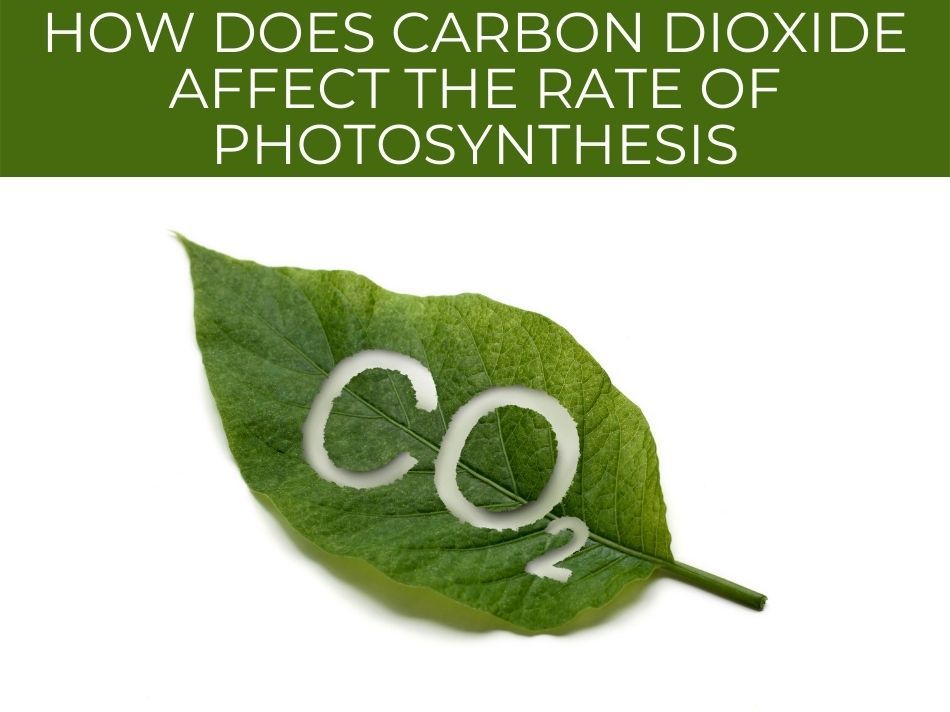
How does carbon dioxide affect the rate of photosynthesis
There are three factors that can affect the rate of photosynthesis and they include the amount of carbon dioxide in the air, the amount of sunlight, and temperature surrounding the plants.
With increased levels of carbon dioxide, plants’ stomata are able to take in more carbon dioxide. The more carbon dioxide taken in by the plant, the faster the reaction (photosynthesis) will take place. Increased CO2 can increase growth by 20% & plant size by 30%.
When carbon dioxide levels are higher, and photosynthesis happens at a faster pace, which results in more carbohydrates being produced.
Carbohydrates are a big source of energy that help the plant grow faster and stronger.
Here’s a great article on the inputs of photosynthesis.
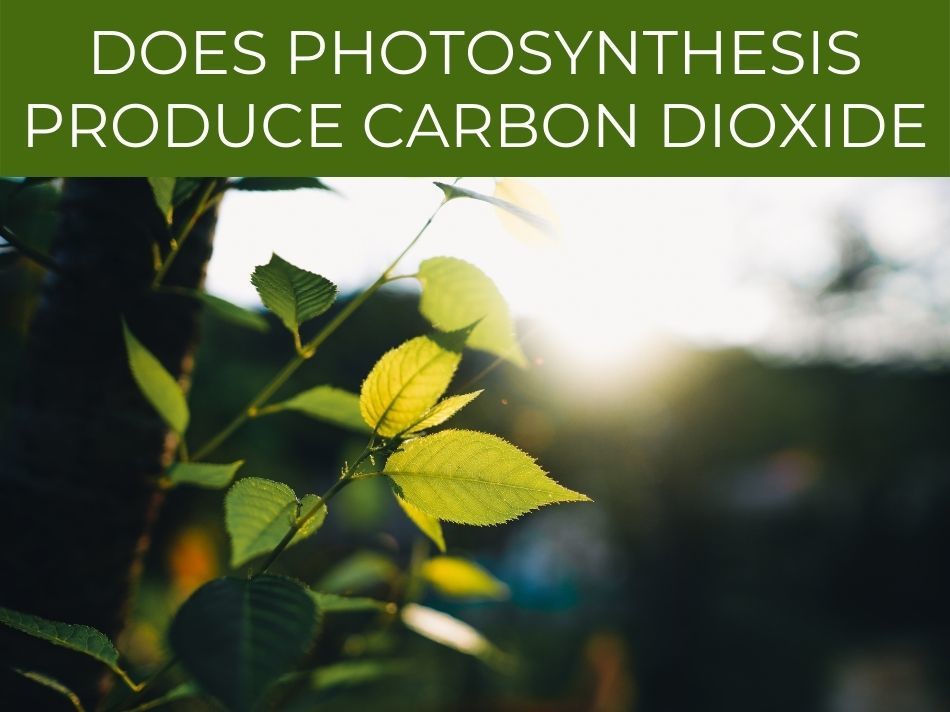
Does photosynthesis produce carbon dioxide
The process of photosynthesis is commonly known as one of the sources of oxygen for life on earth.
But, did you know that plants also release carbon dioxide during the night?
Respiration occurs in plants during the night. Plants take in oxygen & release carbon dioxide. It can be viewed as the opposite of photosynthesis. The goal of photosynthesis is to produce food for plants, while the goal of respiration is to produce energy from the food.
Plant respiration is simply the process of converting sugars into energy that allows the plant to grow.
Much like humans metabolize when burning sugar during exercise, plants also metabolize when burning sugar into energy. This process is known as respiration and occurs at night.
Read more on the outputs of photosynthesis.
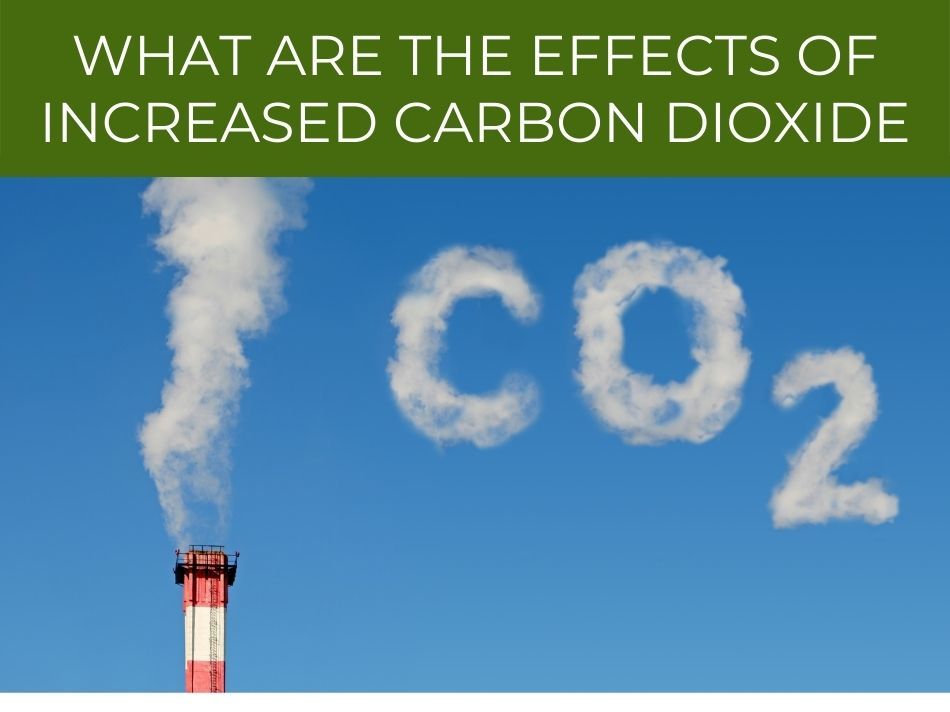
What are the effects of increased carbon dioxide
Increased carbon dioxide levels may actually be beneficial to plants, to a certain degree, at least.
Higher levels of carbon dioxide, especially in a confined space, will increase the humidity, which will increase moisture in the air.
Plants exposed to higher levels of carbon dioxide will photosynthesise faster, use less water, & will also grow faster. These plants will produce more starch & less protein, & also produce less important nutrients. Increased CO2 can increase growth by 20% & plant size by 30%.
Increasing carbon dioxide levels may increase the rate at which the plant grows, but it will also negatively impact production of key nutrients such as zinc, vitamin C, and iron.
There is a fine balance between increased growth and depletion of nutrients.
Looking further down the food chain, if plants aren’t producing the necessary protein, then animals who consume these plants will also not produce a sufficient amount of protein.
And, humans that consume these animals will not get the necessary protein from the animals.
Read more about the inputs and outputs of photosynthesis.
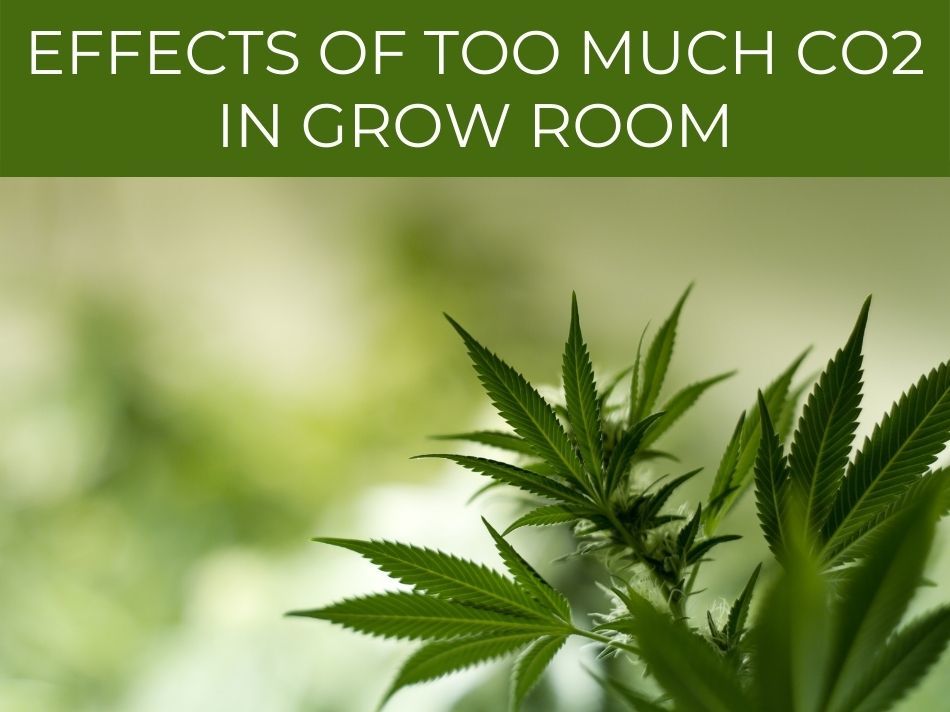
Effects of too much CO2 in grow room
The purpose of a grow room, otherwise known as a growth chamber, indoor farm, or even indoor garden, is to grow plants in a controlled environment.
Growers investing in a grow room need to be cognizant of the various gases present in a grow room and what happens if any of the gas levels become out of control, such as in the case of too much carbon dioxide.
Too much carbon dioxide in a confined space can be very dangerous for humans. Plants may need CO₂ to photosynthesize, but abnormally high levels of carbon dioxide can cause nutrient deficiency (including vitamin C, zinc, and iron. Signs of CO2 overexposure include thickened leaves.
Plant leaves thicken due to increased carbon dioxide levels in both confined spaces and outdoors, as was noted by the University of Washington.
Keep in mind that if carbon dioxide levels exceed 2000ppm, it can kill plants and higher levels can be very dangerous for humans and animals.
Increased carbon dioxide may be good for accelerating plant growth, but too much carbon dioxide will kill plants.
Find out what the most abundant gas in the atmosphere is.
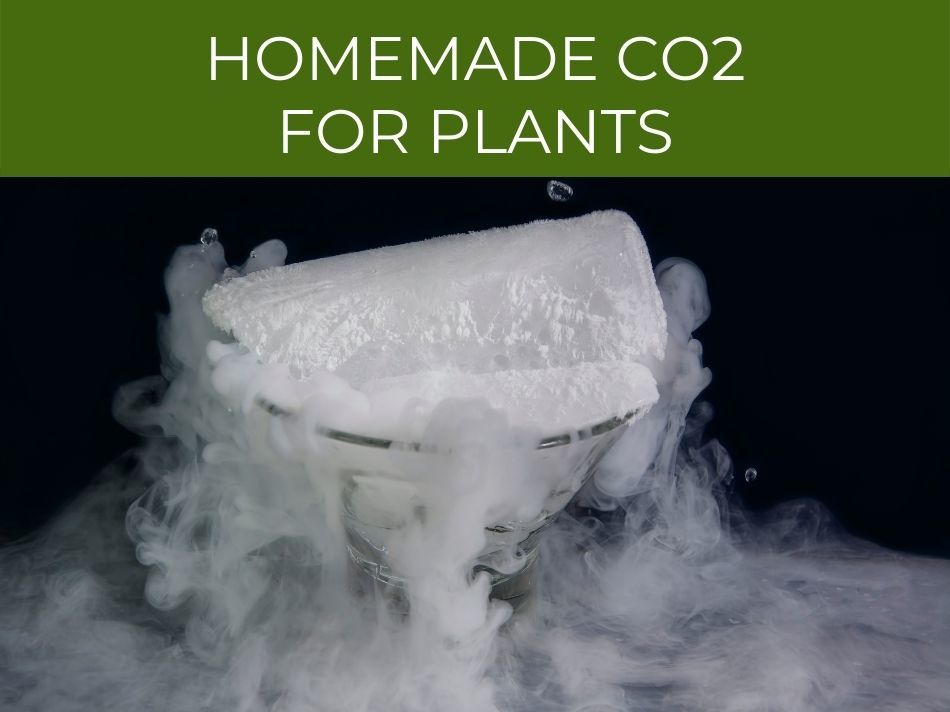
Homemade CO2 for plants
Did you know that it’s possible to make your own carbon dioxide?
The main reason for producing carbon dioxide is to speed up photosynthesis and make sure the plants have a sufficient amount in order to photosynthesise.
To make CO2 for plants, place dry ice inside the grow room, & allow it to sublimate (i.e., turn to gas). Alternatively, mix sugar, dry active yeast, & baking soda, & place in the grow room. Both methods will produce a sufficient amount of carbon dioxide, depending on the size of the room.
Plants will wither and die without enough carbon dioxide.
If you intend on growing plants in a grow room, it is especially important to make sure that you recreate the conditions that the plant needs in order to grow and survive.
See which gases are not greenhouse gases.
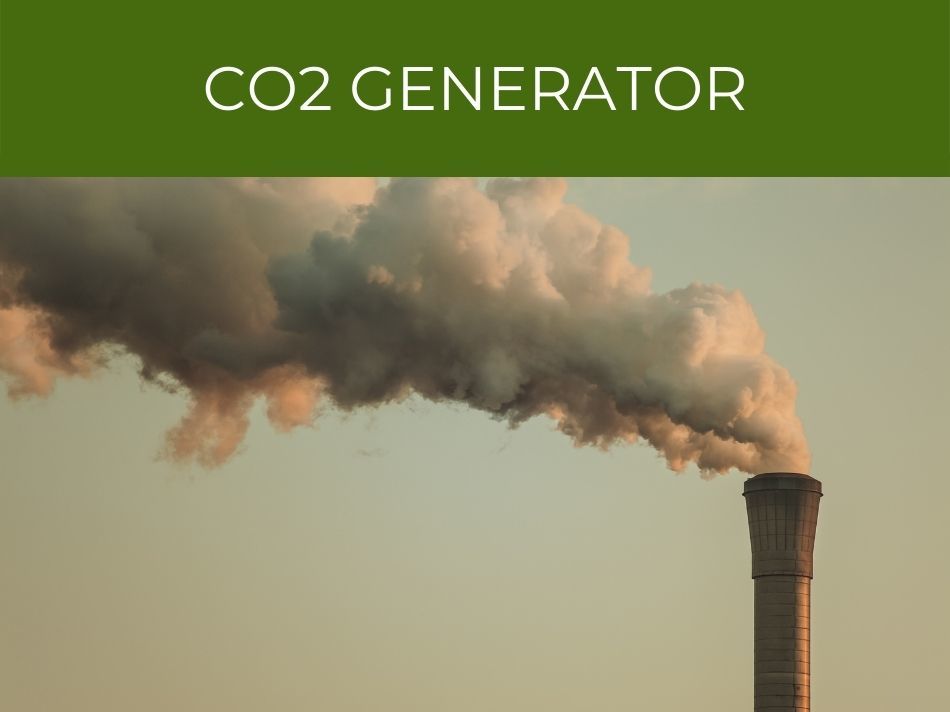
CO2 generator
There are a few important things to be aware of when introducing carbon dioxide into a confined space.
Firstly, there are three methods of introducing carbon dioxide, including through a regulated tank of CO2, a natural source, or through propane or natural gas burners.
Secondly, safety should be a priority as too much carbon dioxide can be dangerous to humans.
A CO2 generator should ideally be used with a regulator, which helps to control the amount of CO2 in the room via a timer. Calculate the size of the room to determine how much CO2 should be released by using the formula: length x width x height.
If the CO2 in the room is 2000 ppm, or alternatively, 0.2%, then simply multiply the room size by 0.002. This should give the amount of CO2 required for the space.
There are grow room calculators online that can do the calculations for you.
Check out the complete guide to indoor greenhouses with grow lights.


